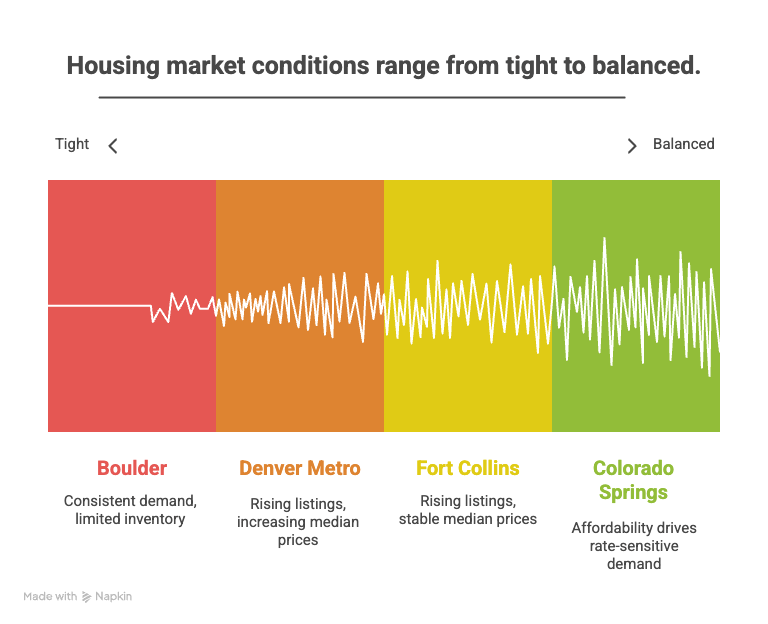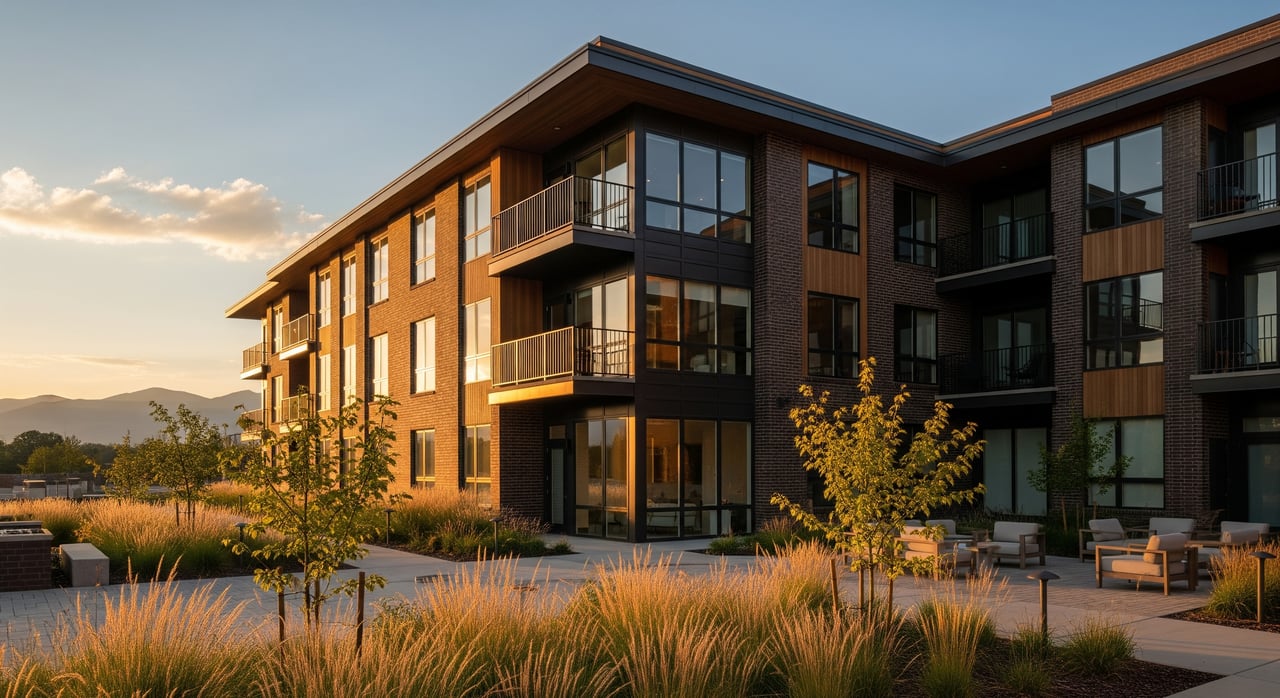Mortgage rates have fallen to their lowest point in four months, igniting a wave of refinancing and stirring renewed interest among buyers nationwide. While this shift is making headlines across the country, the real question for Denver Metro and Front Range residents is: what does it mean for our local housing market?
In short, the combination of lower borrowing costs and evolving supply levels could reshape the balance between buyers and sellers through the rest of 2025 and into 2026.
The National Backdrop: Rates and the Fed
According to the Mortgage Bankers Association, the average 30-year fixed-rate conforming mortgage hit 6.60% as of August 12, 2025, down 32 basis points from late May. Requests to refinance spiked 23% week-over-week, accounting for 46.5% of all mortgage applications — the highest share since April. Purchase loan demand rose 17% compared to the same week in 2024.
This decline is tied to shifting expectations for Federal Reserve policy. With job growth slowing to its weakest pace since December 2020 and unemployment ticking up to 4.2%, investors now see an almost certain chance of a rate cut at the Fed’s September meeting. Futures markets are pricing in three rate cuts by the end of the year, potentially lowering the short-term federal funds rate by 1.25 percentage points over the next 10 months.
While the Fed does not directly set mortgage rates, lower short-term rates can influence investor sentiment in mortgage-backed securities, often leading to more competitive rates for borrowers.
Denver Metro Snapshot: Supply and Demand Dynamics
Here at home, the Denver Metro Association of Realtors (DMAR) reports that as of June 2025, active listings stood at 14,007, up 3% month-over-month and a substantial 31% year-over-year. Median close prices for all residential properties reached $610,200, a 1.7% increase from May.
Detached homes averaged $809,042 in June, up 2.2% year-over-year, while attached homes averaged $440,121, down 6% year-over-year. Median days on the MLS reached 18, up nearly 39% month-over-month, suggesting buyers have more breathing room than during the frenzied post-pandemic years.
Across the Greater Metro Denver area, the median days on market in June was 41 days — a sharp 38.98% increase from last year — signaling a market that, while still active, is no longer sprinting at 2021–2022 speeds.
What Lower Rates Could Mean for Denver Buyers
For first-time buyers in the Denver Metro, every fraction of a percentage point drop in rates can meaningfully change monthly payments. On a $600,000 home, a 0.32% drop in mortgage rates could translate into hundreds of dollars saved each month, potentially bringing more inventory within reach.
Move-up buyers — those selling a current home to purchase another — may find the math more favorable as well. With more active listings, they can shop with greater choice and less urgency, while lower rates improve affordability.
Investors may also see opportunity. With rents holding relatively stable and inventory growing, selective purchases in high-demand submarkets like Highlands Ranch, Arvada, and Longmont could yield strong long-term gains, especially if financed at a lower rate.
Sellers: Timing and Strategy Are Key
For sellers, this shift demands a strategic approach. More listings mean more competition, so pricing accurately and presenting the property impeccably will be essential. The days of simply listing at a premium and expecting multiple offers in 48 hours are largely behind us.
However, lower mortgage rates could expand the buyer pool in the coming months, particularly if the Fed follows through with projected rate cuts. This could create a window in late 2025 where demand ticks upward before the traditional winter slowdown.
Front Range Trends to Watch
Outside of the core Denver Metro, markets like Fort Collins, Boulder, and Colorado Springs are seeing similar supply trends. Fort Collins has reported an uptick in active listings, with median prices holding steady, while Boulder remains one of the most competitive submarkets due to limited buildable land and consistent demand.
Colorado Springs, benefiting from relative affordability compared to Denver, could see a sharper uptick in buyer activity if rates drop further. This is particularly true for VA buyers and military families stationed at nearby bases.
Looking Ahead
Economists at Fannie Mae forecast that 30-year fixed mortgage rates could drop to 6.4% by year-end and average around 6% in the second half of 2026. For Colorado buyers and sellers, that suggests an environment where affordability improves gradually, not overnight.
The balance of power in the Denver Metro and Front Range housing market will hinge on how quickly rates drop and whether job growth rebounds. If inventory continues to rise while rates decline, buyers could enjoy a rare blend of choice and affordability.
For those considering a purchase, the coming months may offer a strategic advantage. Sellers, on the other hand, may want to move before competition intensifies, particularly if more homeowners decide to list in response to lower borrowing costs.





